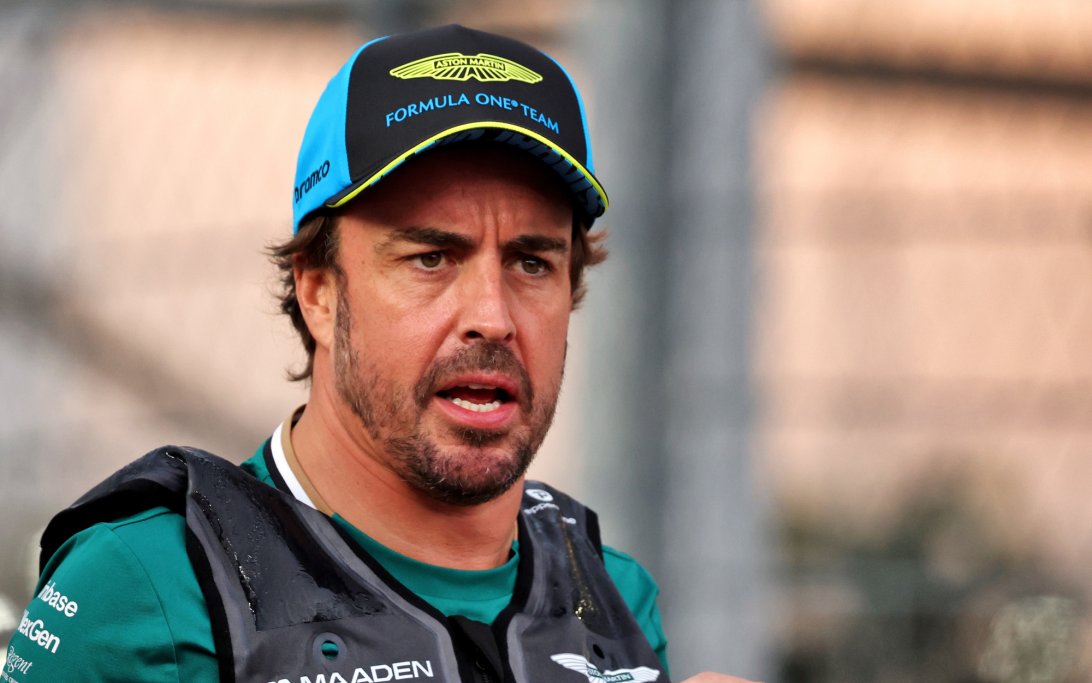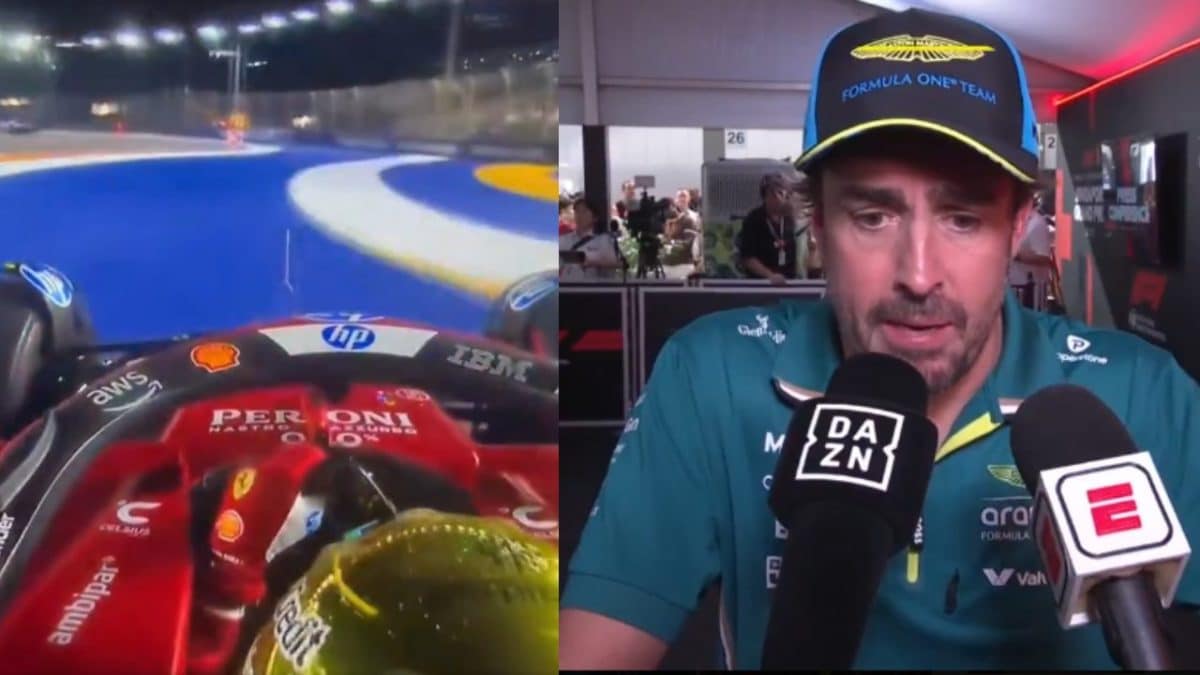The Singapore Grand Prix is an annual spectacle of light, speed, and unbearable heat, yet the true drama of the 2025 race unfolded long after the floodlights dimmed. Lewis Hamilton crossed the line in seventh place, a mere four-tenths of a second ahead of Fernando Alonso, after what looked like a monumental act of survival. He had wrestled a car plagued by a catastrophic brake failure back to the pits, pushing through mechanical chaos and physical pain to secure a handful of points. But three hours later, with the teams already packed up and the results graphics on screens around the world ready to be finalized, the FIA rewrote the history books, dropping Hamilton to eighth.
This was not a simple matter of a driver cutting a corner. This was a controversy ignited by a single, explosive radio message—a furious, guttural cry of injustice from one champion aimed at another, one that proved powerful enough to spark a post-race investigation that stretched well past midnight. The central question that emerged from Fernando Alonso’s immediate, volcanic reaction was not about technical legality, but about the very essence of fairness: “How can you drive without brakes? Dangerous!” Alonso yelled. “He cut corners and still finished ahead of me. If that’s allowed, what are we even doing here?”
The subsequent penalty did more than just swap the seventh and eighth positions. It ripped open a fiercely divisive debate over the interpretation of rules, the consistency of the FIA, and, most tellingly, it exposed the raw, psychological wounds of Lewis Hamilton’s struggling debut season with Ferrari.
The Near-Fatal Drama of the Final Laps
The closing stages of the night race at Marina Bay transformed into a high-stakes nightmare for Hamilton. Having pitted for fresh soft tyres late in the race, he was flying, reeling in the cars ahead at a blistering pace. Then, with just three laps remaining, disaster struck at Turn 16. As Hamilton hit the brake pedal, it sank. The front brake calipers were critically overheating, with telemetry later confirming temperatures had exceeded 1,200°C, and the right-front caliper had lost pressure entirely. The car, in Hamilton’s own words, was nearly undrivable.
What followed was a champion’s desperate improvisation. Hamilton coasted through corners, missed apexes, and was forced to cut across kerbs and run off the track entirely, desperately fighting to prevent an accident. He wasn’t chasing a lap time; he was chasing the finish line. He managed to nurse the wounded SF25 home, believing he had delivered a gritty performance that showcased his commitment to the team and his refusal to quit.
However, the stewards, reviewing the data hours after the chequered flag, saw the incident through the cold, objective lens of the regulations. The telemetry revealed at least four instances where Hamilton left the track, and crucially, they determined that even in his state of mechanical collapse, these excursions resulted in him “gaining a lasting advantage” relative to the tightly chasing Alonso. Formula 1’s strict driving standards leave no room for ambiguity: mechanical issues do not excuse a track limits violation if an advantage is gained. The seven-time World Champion’s defence—that he was merely trying to survive—was deemed insufficient grounds for leniency.
Alonso’s Volcanic Radio Outburst: The Spark that Ignited the Fire
The subsequent investigation was not prompted solely by routine data checks. It was, arguably, a direct response to Fernando Alonso’s furious, expletive-ridden communication over his team radio. The Spaniard’s anger was palpable, focusing not just on the corner-cutting but on the perceived safety risk of Hamilton driving a broken car. “Is it safe to drive with no brakes?” he demanded to know, coupling the safety issue with a stinging accusation of inconsistent stewarding.
Alonso was quick to frame the issue as one of fairness for the entire field. He pointed to previous controversial decisions against himself, stating, “They tried to disqualify me once for missing a mirror, and now someone drives around without brakes and nothing happens? There must be one rule for everyone.” This appeal to inconsistency struck a deep chord with fans who often feel the sport’s rules are applied selectively, depending on the status of the driver. For the veteran Spaniard, the penalty was vindication—a long-awaited moment of payback after years of feeling unfairly targeted by regulatory decisions.
Hamilton, by contrast, remained composed but visibly weary, stating he was attempting to manage the situation safely. He felt the penalty was harsh, born out of necessity rather than malice. Yet the rules, the FIA insisted, are black and white: an advantage was gained, and the final result was affected. The verdict was a swift five-second time penalty, officially demoting him and handing the hard-fought seventh place to Alonso.

The Late-Night Scandal: A Blow to F1’s Credibility
The most inflammatory aspect of the controversy was the timing of the verdict. The FIA’s decision landed more than three hours after the race, with the results graphic changing around midnight local time. This post-race revision of the standings, long after the podium celebrations and media duties were complete, reignited a frustrating debate about F1’s tendency to allow pivotal decisions to drag on into the night.
The prolonged investigation—involving a deep dive into onboard footage, telemetry, and sector timing—suggests the stewards were struggling to reconcile the letter of the law with the extraordinary circumstances of Hamilton’s mechanical failure. They claimed to have found “new evidence” that sealed the penalty, yet the delay itself fostered suspicion and the widespread accusation that the sport was prioritizing drama over finality. Ferrari’s team principal, Fred Vasseur, was forced into a diplomatic stance, publicly accepting the decision as “unfortunate” but respecting the FIA’s call. However, the mood in Maranello was reportedly one of private anger and exhaustion.
The penalty served as a harsh public reminder of Ferrari’s operational shortcomings. The mechanical failure that caused the brake issue in the first place, coupled with previous criticisms of their strategy execution, painted a picture of a team struggling with fundamental professionalism. The silence from the Scuderia on social media, contrasted sharply with the celebratory post from Aston Martin, only underscored the depth of their frustration and embarrassment.

The Symbolic Cost: Hamilton’s Crumbled Momentum
For Lewis Hamilton, the cost of the Singapore penalty transcends the single point lost. It is symbolic of his entire, turbulent first season at Ferrari—a series of near-misses, strategic missteps, and mechanical frailties that have consistently thwarted his potential. What was intended as a career rebirth, a final chapter chasing history with the storied Italian team, is fast becoming a saga of relentless frustration and heartbreak.
The penalty cost him more than position; it cost him momentum and, potentially, another slice of faith in the Ferrari project. His post-race radio message, though composed, carried the weight of disappointment: “I gave it everything, but we need to be better.” It was a statement of accountability fused with a subtle, yet unmistakable, challenge to the organization that had promised him a fresh start and a championship-caliber car.
The incident forces a stark re-evaluation of where Hamilton and Ferrari truly stand. The question is no longer about winning or losing a specific battle, but about the long-term viability of their partnership and their ability to overcome the systemic issues that continue to plague their performance.
Ultimately, the Singapore controversy leaves F1 fans and pundits divided: Was the FIA right to uphold the letter of the law, proving that no driver is above the rules? Or did they “rob a legend” of one of his grittiest survival drives, failing to apply common sense to exceptional circumstances? The answers will not only define the rest of Hamilton’s season but may well determine the entire trajectory of Ferrari’s championship ambitions, proving once again that in Formula 1, the most compelling stories often begin where the race ends.
